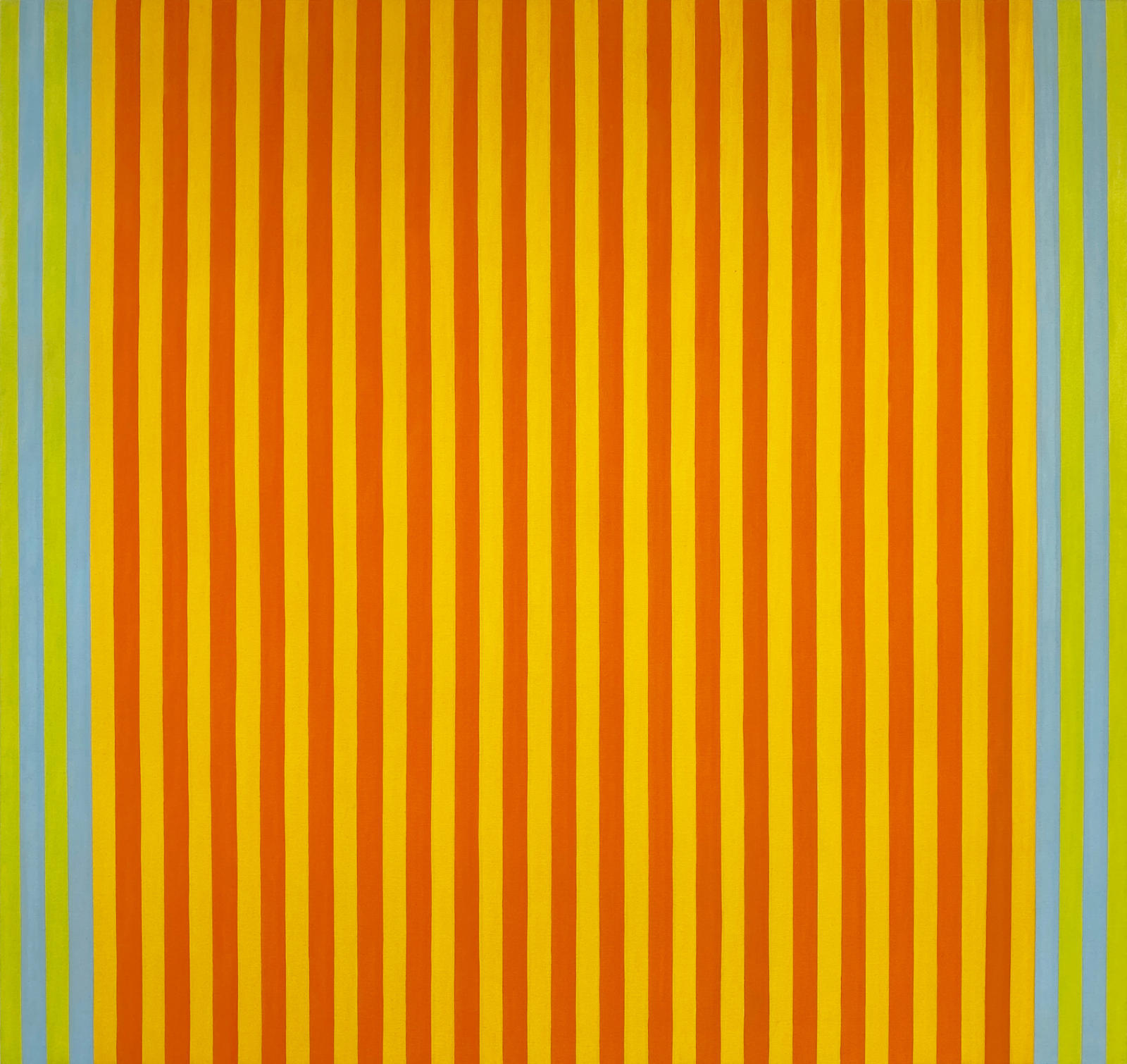artist
Writer, journalist and painter Gene Davis has played a key role in 20th-century American Art and has been a contributor in establishing Washington D.C. as a center of contemporary art. Without a traditional art education, Davis taught himself through various trips to museums and galleries in New York as well as Washington. During the 1960s art critics identified Davis as the leader of the Washington Color School which was a collective of abstract painters from Washington. Davis also played a significant national role in the Color Abstraction movement during the 1960s.
To view Davis’s work he suggested that “instead of simply glancing at the work, select a specific color—and take the time to see how it operates across the painting.—Enter the painting through the door of a single color, and then you can understand what my painting is all about.” In discussing his stripe work, Davis spoke not simply about the importance of color, but about ‘color interval:’ the rhythmic, almost musical, effects caused by the irregular appearance of colors or shades within a composition.
Description
In the 1960s, art critics identified Davis as a leader of the Washington Color School, a loosely connected group of Washington painters who created abstract compositions in acrylic colors on unprimed canvas. Their work exemplified what the critic Barbara Rose defined as the 'primacy of color' in abstract painting.
Although Davis's work from the 1960s—mostly hard-edged, equal-width stripe paintings—is generally viewed in the context of the Washington Color School, his goal differed significantly from the other Color School practitioners. Artists like Morris Louis and Kenneth Noland generally preferred what Noland called 'one-shot' compositions, mostly symmetrical images that could be comprehended at a glance.
In contrast, Davis experimented with complex schemes that lend themselves to sustained periods of viewing. Davis suggested that "instead of simply glancing at the work, select a specific color—and take the time to see how it operates across the painting.”
"Enter the painting through the door of a single color, and then you can understand what my painting is all about."
In discussing his stripe work, Davis spoke not simply about the importance of color, but about 'color interval:' the rhythmic, almost musical, effects caused by the irregular appearance of colors or shades within a composition.
provenance
Charles Cowles Gallery, New York
Martha Mateyka Gallery, Washington D.C.
Estate of the artist to Smithsonian National Art Museum. Washington D.C. until 2024
Sotheby's NY, August 2024









